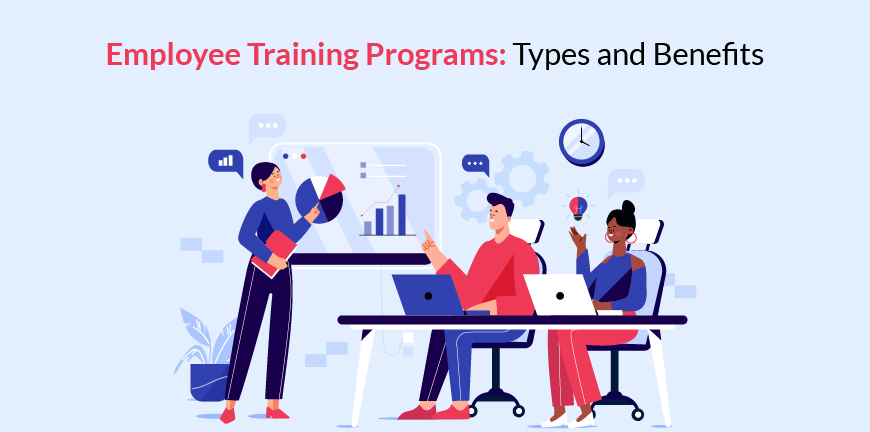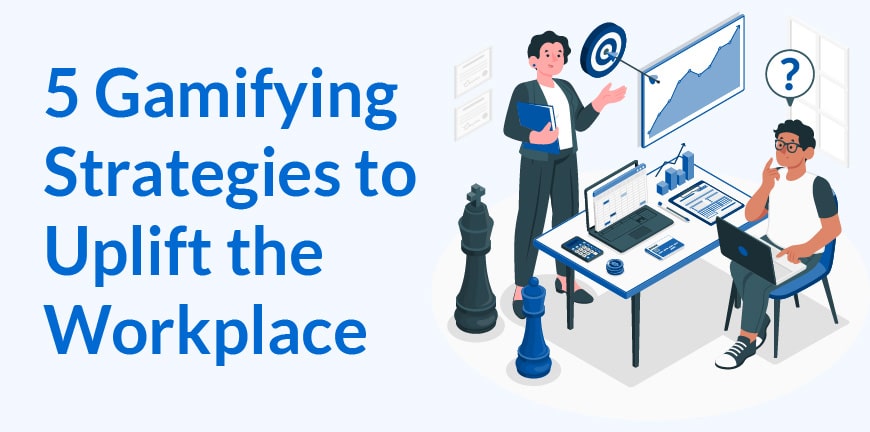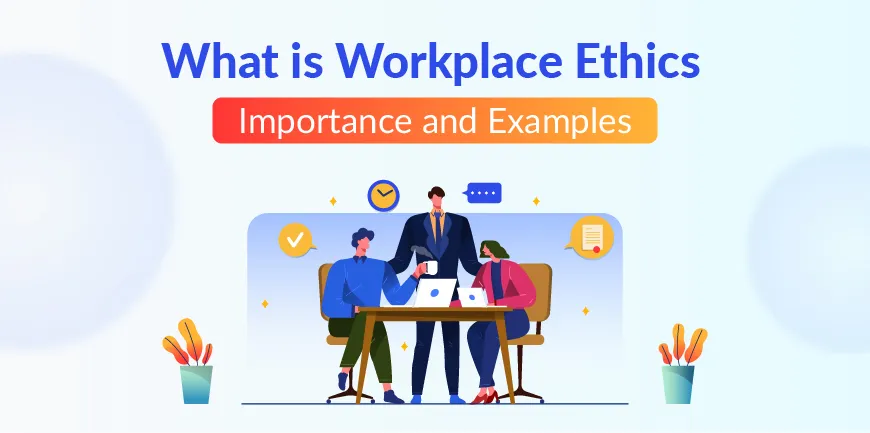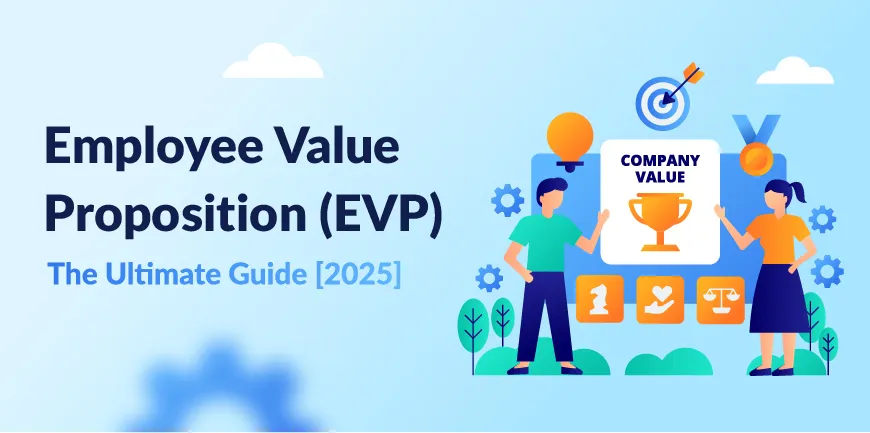
11 Types of Employee Training Programs
13/12/2023
Fair Wages, Fair Workplace: Strategies for Successful Pay Equity Management
16/12/2023Is gamification in HR a new idea? Not really. The idea of gamification is more than two decades old, and its origins are in the arcade games 80s kids were obsessed with. Yes, though it was the 1996 flick Independence Day that ‘reminded us’ that killing aliens could be not just scary but a lot of fun, it was the game Contra, which landed on coin-operated arcade machines in Japan in 1987, that ‘showed us’ for the first time how much fun it really is.
Everyone remembers jumping sideways, shouting ‘arr’, and levelling up! Such is the nostalgia of that game, that we cannot speak of gamification without a mention of it. Can you imagine what the impact could be if these game-like elements of rewards, badges and incentives are introduced in the workplace, if people could level up not just in fun activities but in performance reviews? That’s gamification at the workplace, folks, and HR holds the key to make it happen!
Play and Learn: The Importance of Gamification
Playing is the way of learning, and according to recent studies, this is not a phenomenon and is easily observed in humans right from childhood. According to Vygotsky, imaginative play in children supports the development of ‘self-directed executive functions’; in other words, it develops the ability to think and act on their own and not just do what they are being told to do.
Since gamification is all about bringing the aspect of play and its benefits into the framework of a workplace, the same truths could also hold for your employees. In other words, if you want your employees, who have been stuck in a routine or a cycle, to innovate and think outside the box you have placed them in, you need to encourage gamification at the workplace!
5 Gamifying Strategies for the Workplace
1. Game-based learning and development
There are many ways to train the brain, and the best way is to show, and not tell. In fact, studies show that video-based training is miles ahead of more pedantic written methods, when it comes to knowledge retention and application at work. And the only thing better than an adventure movie is a real adventure, where you are the hero, just as in a game!
A better way, therefore, to introduce gamification, would be to not just show, but invite, challenge and reward. Lace the learning material with mini games that invite users to solve real-life challenges in exchange for points and name display on a leaderboard.
Once the training is complete, it is possible to reward those in the top positions of the leaderboard as well. These can be presented in an actual award session rather than a digital voucher. A game of knocking marbles might be better than playing Candy Crush on your computer any day, or is it?
2. Gaming a way to desirable habits
Possessing the knowledge or the skills to solve a problem is never enough. The person must also have the right attitude and the persistence to follow through to the finish. The will not to give up so easily is also crucial to come up with a solution. In a game, you lose and start all over again several times before you get it right and are able to cross a level.
This not only builds persistence but also a lot of patience, which is crucial to be successful at the workplace. It also builds confidence that it is not the end of the world if you are not able to figure things out or put the pieces together the first time. There’s always a second time you can succeed in.
Create mini games around work scenarios and encourage your employees to participate in them. Let them unlock new levels, compete against each other on leaderboards and share their achievements with their friends, all in a day’s work. Imagine the engagement you will have at the end of the day, dear HR.
3. Gamifying brainstorming sessions
Generating great ideas is not easy. It takes a lot of blood, sweat and tears, especially if you take the traditional route, without the assistance of Generative AI. While AI can churn up some brilliant ideas, there’s nothing quite like being in a brainstorming session with five other people, each with their thinking hat on, trying to solve one complex problem, each in his/her own way.
Applying gamification to the scenario! Imagine a round of drinks after 3 rounds of ideas or a chocolate or voucher for the winning idea at every meeting. Brilliant, is it not? It must be remembered however that while conducting such brainstorming sessions, one person must act as a moderator and maintain the balance between collaboration and competition.
The scales, if they tip too much in favor of either, will create an undesirable situation. Have you ever been part of any such gamified brainstorming sessions? Let us know in the comments below whether you enjoyed it.
4. Gamifying performance reviews
Performance reviews need not make the participants, your employees, say “same old, same old”, if they were encouraged to give very frank feedback on what they thought about it. And if this is what a 10- or 12-year-old company veteran has to say, then your ship is in troubled waters.
If you are stuck in the doldrums, then you need to catch the wind, my friend! Award badges on completion of several levels (rounds) of assessments and allow them to unlock secret challenges (where they will be asked additional questions that go beyond on-job skills) for points too.
Create a level ‘playing field’ (pun intended) by offering similar experiences to every employee who undergoes a performance review. You can tackle the problems of low morale and disengagement easily with this tactic.
5. There’s nothing like a real game!
There is no way you can solve a problem without having the feel of a game or a gamer’s spirit while you are at it. But work shouldn’t be all about work only. All work and no play make Jack a dull boy.
And nobody wants to be Jack; even Jack does not want to be Jack in this case. An actual game or fun activity on the work floor can not only be a stressbuster and worry reliever, but it can also help reconcile any differences you may have with your teammates or others playing the game with you in the best manner possible, by giving you a chance to beat them without beating them!
It is really okay to game!
In many ways, gamification can make you rethink if there is a need for the term work-life balance, not because the lines are blurred but because work itself begins to become a part of life itself. And your employees start to ‘love’ the work they do.
And as Steve Jobs said, “The only way to do great work is to love what you do!” if gamification is one of the many ways you can get there, and you haven’t yet given it a try, why don’t you give it a shot and drive away the alienating elements of mistrust, under confidence and lack of energy in your workplace?
And if you have already implemented any gamification at the workplace and succeeded at it, let us know how you did it in the comments below. We want to hear from you.
Contact Us For Business Enquiry

Rajkumar Shanmugam
Rajkumar Shanmugam is the Head of HR at ALP Consulting, bringing over 19 years of comprehensive HR leadership experience across India and international markets. His expertise spans talent acquisition, employee relations, performance management, compliance, and HR transformation. Rajkumar has a proven track record of driving people-centric initiatives, enhancing workplace culture, and aligning HR strategy with business goals. With extensive experience in US staffing operations and global mobility, he continues to lead organizational excellence through innovation and employee engagement.




